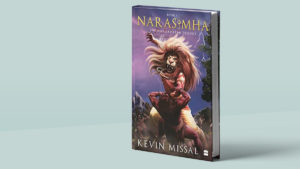INTRODUCTION
Book Title: Think Like a Monk
Author: Jay Shetty
Genre: Self-help, Personal Development
Publication Date: September 8, 2020
Publisher: Simon & Schuster
Page Count: 352

I first heard about Jay Shetty in a captivating YouTube video where someone shared his remarkable journey. As a young college student, Shetty left everything behind to become a monk. Now back in the worldly life, he continues to live with a monk’s mindset. Intrigued by his story and philosophy, I decided to delve deeper into his journey and came across his book, Think Like a Monk.
The core idea of Think Like a Monk is to provide a glimpse into the life and mindset of a monk. Jay Shetty explores how monks think differently from regular people and what it takes to become one. However, Shetty simplifies this concept by emphasizing that one doesn’t need to renounce the world or undergo the rigorous trials of monastic life to attain a monk’s serenity. Instead, he suggests that it is possible to adopt a monk’s mindset while fulfilling worldly duties and enjoying everyday life.
This idea, though not new, is compellingly presented. Many ancient scriptures advocate that one can live a simple, monk-like life within the confines of their own home. Even Buddha taught that renunciation is not essential for achieving nirvana; one can attain peace and enlightenment while remaining engaged in worldly life.
SUMMARY
In Think Like a Monk, Jay Shetty explores various concepts such as negativity, fear, ego, the monkey mind, identity crisis, and lack of purpose. He examines how monks, who are also human and experience similar challenges, handle these situations differently. The key distinction lies in their approach to these issues. Drawing from his time as a monk, Shetty presents lessons, techniques, and strategies that monks use to navigate life’s challenges. He offers simplified and practical options for readers to adopt, enabling them to experience the same tranquility and clarity in their everyday lives.
ANALYSIS
Jay Shetty’s writing style is engaging and accessible, making complex concepts easy to understand and implement. While the principles Shetty conveys—such as living in the moment, enjoying the process, valuing intention, practicing humility, expressing gratitude, prioritizing service, embracing forgiveness, being comfortable in your own skin, finding clear purpose, maintaining a good routine, and engaging in meditation and visualization—are not new, his delivery is what sets this book apart.
These themes are common in many self-help and personal development books, yet the impact varies greatly depending on how they are presented. Shetty’s unique perspective and clear articulation make these timeless concepts resonate more deeply. The strength of his message lies in its clarity and practicality, offering advice that readers can easily apply to their own lives. While many strategies in the book are actionable and adoptable, it is Shetty’s ability to make these strategies feel fresh and relatable that leaves a lasting impact.
MY TAKEAWAY
There are numerous insights I’ve gained from the book, far too many to include in this review without making it overly long. Instead, I have compiled these valuable lessons into a concise and impactful PDF. This quick read is designed to inspire you to explore the book yourself. Please read it and share your feedback!
CONCLUSION
Think Like A Monk is a valuable resource for anyone seeking to cultivate mindfulness and live a more intentional, meaningful life.



